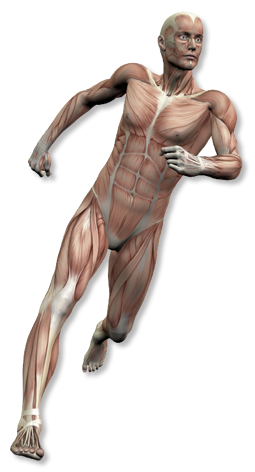Acupuncture for Elbow Pain
Acupuncture is proven clinical treatment to relieve inner or outer elbow pain along with elbow joint inflammation associated with elbow tendonitis, elbow arthritis, tennis elbow and more.
Biceps Tendon Rupture
At the elbow, biceps tendon injuries involve the single tendon attaching this upper arm muscle to the radius, one of two long bones of the forearm. Rupture constitutes a complete tear of the tendon, separating the muscle from its boney anchor point (in an avulsion, a similar injury, the boney attachment separates with the tendon).
Without attachment past the elbow, the biceps muscle is unable to function and will retract up toward the shoulder, significantly weakening key actions at the shoulder and elbow. Surgical repair will be necessary to return full strength to the shoulder and elbow. Full recovery will require extended rest.
Acupuncture can help control pain and prepare for rehabilitation by encouraging proprioceptive connection to the associated tissues. Proprioception is a key neurological function that can be disrupted in response to injury and that diminishes when the arm is not used, or is used little (as during recovery from injury).
Cubital Tunnel Syndrome
In cubital tunnel syndrome, the ulnar nerve is compressed at the elbow causing symptoms of numbness or tingling in the little finger and the adjacent half of the ring finger. Weakness of grip may occur as well.
Acupuncture can decrease nerve irritation at the site of the cubital tunnel in the elbow and may be used to address soft tissue dysfunctions in the neck or shoulder that could tether the nerve and aggravate the condition.
Distal Biceps Tendon Rupture
At the elbow, biceps tendon injuries involve the single tendon attaching this upper arm muscle to the radius, one of two long bones of the forearm. Rupture constitutes a complete tear of the tendon, separating the muscle from its boney anchor point (in an avulsion, a similar injury, the boney attachment separates with the tendon). Without attachment past the elbow, the biceps muscle is unable to function and will retract up toward the shoulder, significantly weakening key actions at the shoulder and elbow. Surgical repair will be necessary to return full strength to the shoulder and elbow. Full recovery will require extended rest.
Acupuncture can help control pain and prepare for rehabilitation by encouraging proprioceptive connection to the associated tissues. Proprioception is a key neurological function that can be disrupted in response to injury and that diminishes when the arm is not used, or is used little (as during recovery from injury).
Elbow Arthritis
Arthritis involves gradually increasing damage to the cartilage surfaces lining a joint. When arthritis develops in the elbow, pain and stiffness will accompany attempts to bend or straighten the arm. Acupuncture can help alleviate the pain and soften tissues within and surrounding the elbow joint, allowing some return of elbow function.
In cases where surgery has been performed at the elbow, acupuncture can accelerate recovery and improve overall outcomes.
Elbow Fracture
Three bones meet at the elbow: the humerus bone of the upper arm and the radius and ulna of the forearm. An elbow fracture may involve any combination of the three.
Elbow Tendonitis
Generally, tendonitis will develop when the stresses on a tendon overwhelm the body’s repair mechanisms. This may occur in a poorly designed exercise regimen with inadequate rest periods or inappropriate conditioning for the physical challenges of the activity. Any activity performed frequently with poor body mechanics will place stress on some structural weak link—often a tendon.
Acupuncture can help manage the pain of tendonitis while decreasing inflammation of the tendon. More importantly, acupuncture can be used for targeted muscle cueing (or inhibition), with the goal of reinforcing or retraining proper body mechanics through motor recruitment patterns. This will address the root cause of the inflammation and pain.
Lateral Epicondylitis
Lateral epicondylitis is a form of tendonitis at the lateral side of the elbow (thumb side when palm is facing forward/upward). Several muscles of the forearm act at the wrist, extending the hand straight back or back and to either side. These muscles attach just past the hinge of the elbow on a projecting piece of the upper arm bone (the lateral epicondyle of the humerus). When these muscles are overused or are used without proper support of other muscles, tendonitis may develop at their attachment site on the lateral epicondyle. Frequently, the deeper ligaments supporting the proximal head of the radius will be simultaneously aggravated.
Little League Elbow
Little League elbow is another name for lateral epicondylitis.
Elbow Pain of Body Pains

Speak With An Acupuncturist To See How We Can Help You!
Call 206.622.0246


 Elbow Pain List
Elbow Pain List